Looking back at Marvel's fatalistic superhero war comic Strikeforce Morituri
'We who are about to die…' Marvel's Strikeforce: Morituri

Strikeforce: Morituri, Marvel Comics, 1986-1989. 31 issues.
There was a time, before four- and six-issue story arcs became the norm, when comic stories seemed to need one or two issues, or an infrequent crossover. Then all of a sudden that book would be the reach its double-sized landmark issue… and with it would come the ending to an epic that the creative team had snuck in under your nose through background story and interludes this whole time. That's what I'm writing about here. Those bigger pictures. Those distinctive runs.
And I'll start with a new love; Strikeforce: Morituri.
So you sign up for a war that will fade away long after you burn out. That's the fate of the members of Strikeforce: Morituri.
What is Strikeforce: Morituri?

Nutshell-wise, Strikeforce: Morituri was a non-mainstream Marvel science fiction book from the minds of Carl Potts, Peter B. Gillis, and Brent Anderson, about a group of superheroes who fight off a horde of alien invaders, and pay a gruesome and fatal price for their amazing abilities. But Strikeforce: Morituri is actually far too complex a nut to be contained in any shell. Once you pass the flash and bang of spaceships and supermen, you see a dark twisted war, full of cruelty, torture, paranoia, corruption, betrayal, folly, and propaganda.
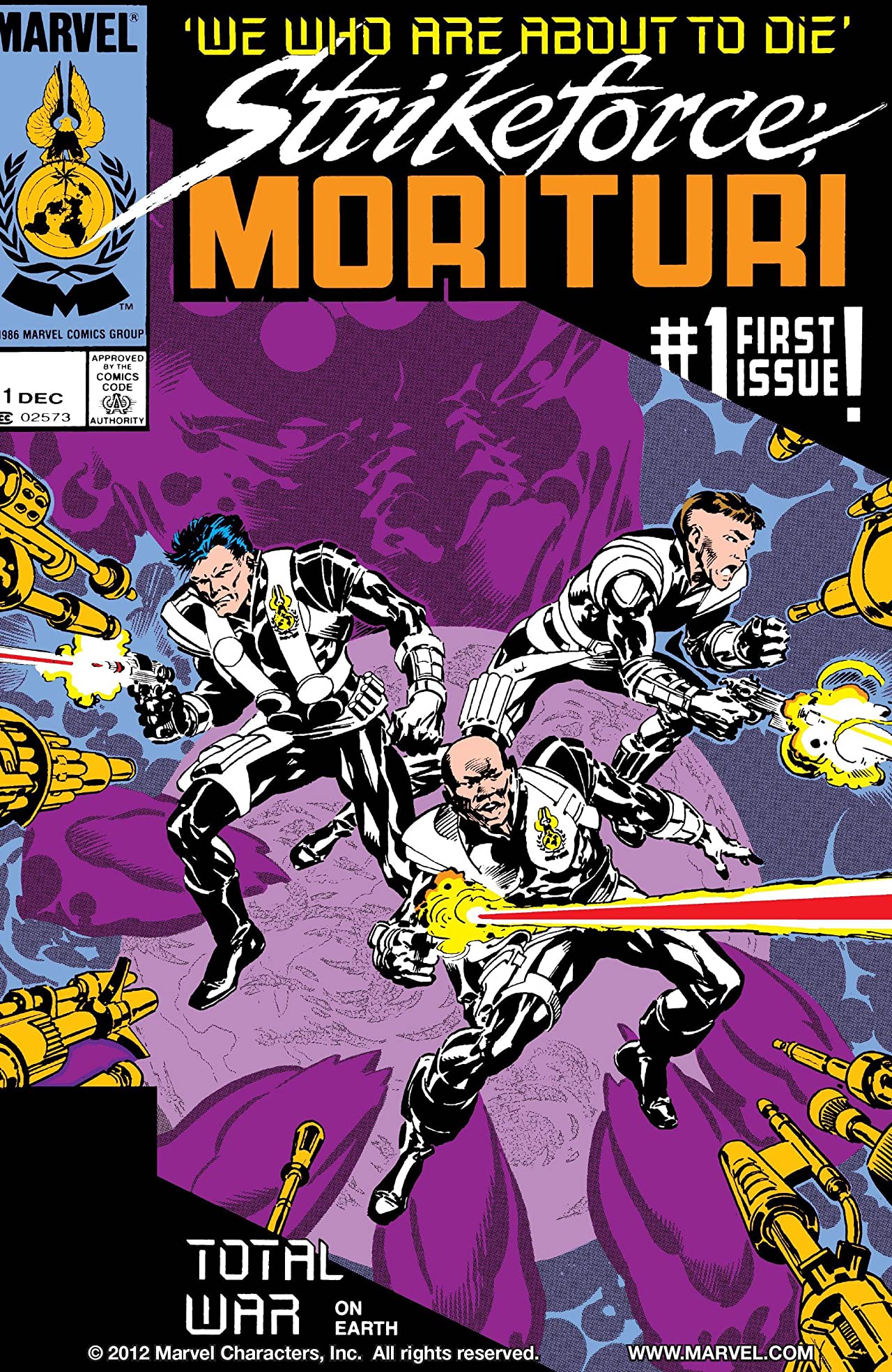
Propaganda is probably the most active element in this book. In the first issue, we learn all we need to learn about the Morituri process itself through the medium of a comic book that our hero pours over with patriotic zeal.
Harold is a warrior-poet. He's a brooding, blue-eyed blonde hero - Captain America mixed with Adam Warlock. He's as comfortable grabbing a gun and running straight into a firefight as he is letting us into his mind to wade in his pessimistically patriotic poetry. Full of life, but giving all but a year of it up to take the "Morituri process" and fight for Earth. Harold is our hero, and from the opening pages of the first issue this much is obvious.
Get the best comic news, insights, opinions, analysis and more!
As we get to know Harold, and slowly meet the other characters, they ease us into a story, giving us an anchor of comic book familiarity as every other page reflects a truly bloody and horrifying war. We know Harold and the hot redhead, will hook up. The shy one will come out of her shell and the giant one will be a gentle juxtaposition of his large physical presence. The team has a heart, a rogue, and a tough as boots commander. With characters set up like this, we'd be fairly secure in knowing where the story was going. And if this were the X-Men, we'd be right.
As readers we, like the citizens of this scorched Earth see the Morituri as the obvious foil for the invading group known as the Horde. How could they not be? They're superheroes. As noble as the Hordians are depraved. But it's a ruse. It's a lie to the reader; the citizens of the world who idolize the Morituri; and to the Morituri themselves, each brimming with patriotic verve. And if it's not a lie then it's at least a distraction to the fact that these 'heroes' with exciting powers and shiny costumes, are ultimately doomed.
You'd be hard-pressed to find a hero in any medium who hasn't found himself even a little destroyed from the inside out. That struggle only reinforces them as a strong and virtuous character once they get back on the horse that threw them. But for the Morituri it's all too real an experience. Here comes the science bit. With a compatible metabolism, a subject can be put through the Morituri process, but the process is unstable, and within a year, the powers flare-up, boosting themselves to such a degree that they burn out the body of the one who carries them. This is called the Morituri Effect. But it is a sacrifice to be made for the greater good. And Strikeforce: Morituri are heroes. Nobility is integral to their character. Right?
The barbarism of Strikeforce: Morituri
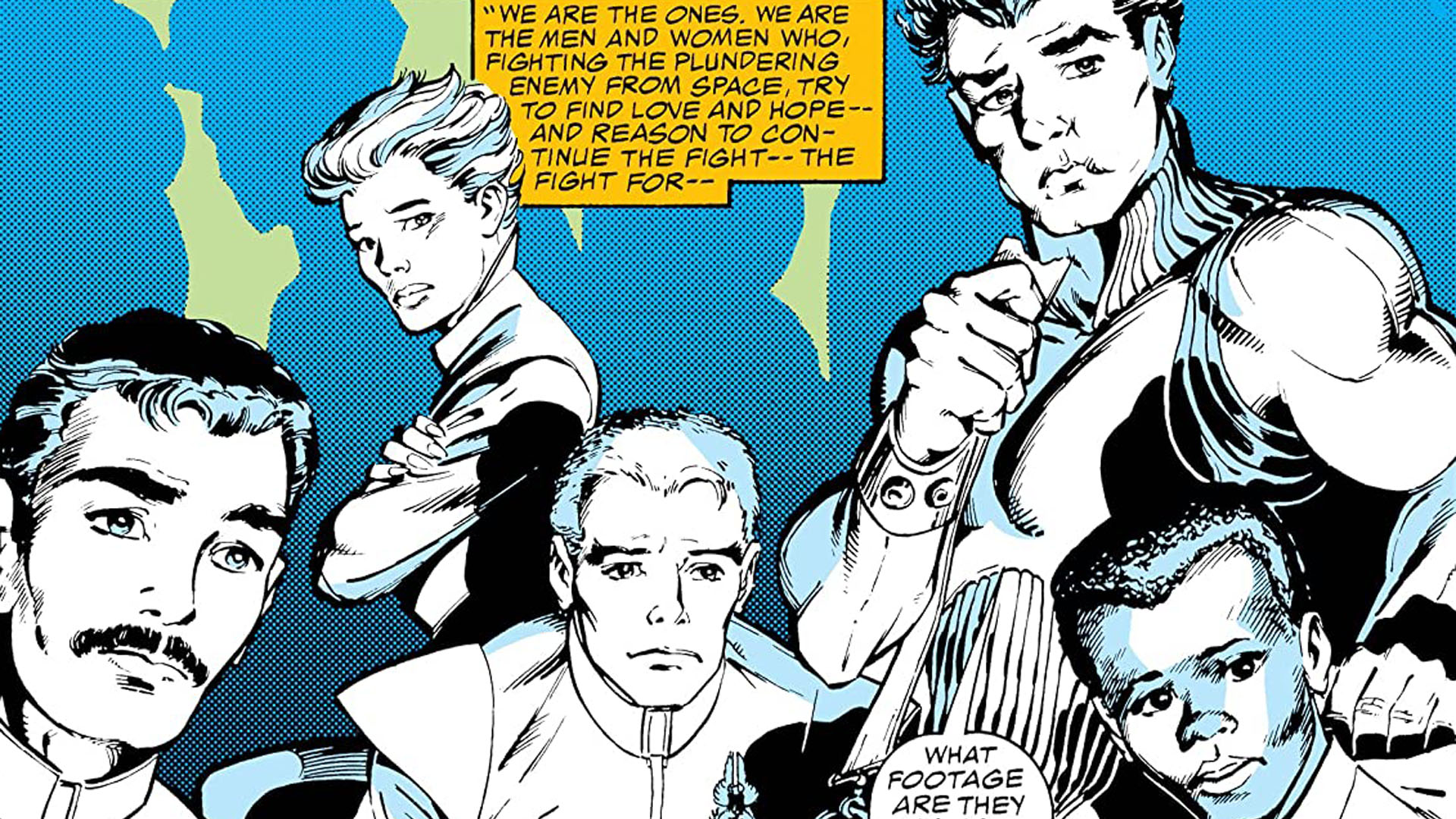
Over the first few issues of Strikeforce: Morituri, the reader is shoved headfirst into brutality that would probably warrant an 'adults-only' label if the book were published today. The reality of horror on our hero Harold's face as he sees footage of what his death would probably look like; human captives of the Horde burning up through Earth's atmosphere in a 'High Dive'; the team tested almost to the point of death by their mother-figure commander; venom, gasses, explosions, electrocutions, pain, torture, suffocation, and betrayal. And at the end of it, we get what? We get what we wanted. Fancy codenames. Fancy powers. Fancy suits. Don't get too worried. This is a book with superheroes after all.
With the fourth issue, the blanket of familiarity is cruelly jerked away. It's happiness and laughter as the first few pages give us a very post-modern sight of comic book characters reading a comic about themselves, and the cover shows the Morituri knocking tables over the Horde and smashing pies into their faces.
See that cover box though? 'The Party's Over'? See the pretty girl in pink in the middle? It's time to forget what the Avengers and the JLA taught you. The sassy confident Snapdragon is the first Morituri to go. The Horde invade. The Morituri win. And in the aftermath, she starts to glow a little bit more. It takes only a few panels, but her powers have burned her out already. With a flash, she is gone, and nobody is in the least prepared. The Morituri are stunned. The civilians are stunned. The readers are stunned. This was the love interest, wasn't it? This was the lead female character, right? Surely she can't die yet…

From that moment on, the banner over the top of the comic, 'We who are about to die…' is more than just a cool slogan. It's a mission statement. The thin veil of comic book adventures is lifted and we find ourselves reading a war story. The Morituri too realize with that first death that they're in a war, and they will die, killed by either the enemy or their own bodies. They can try to save as many people as they can, but they won't save all of them, and they certainly won't save themselves. Heads will be torn off. Children will be poisoned. The Morituri cope by burying themselves in rage, faith or lust. All except Harold. Still the hero, the voice of serenity. He is, after all, our protagonist.
Harold dies in Strikeforce: Morituri #6. He leads the team on an assault against the Horde, but just… dies… nowhere near a battle. Leaderless, each Morituri is alone, fighting however they can, for as long as they can, and the readers' thoughts shift to 'who will die this month?'
Marathon, the strong man, accepts his fate and becomes a kamikaze commando, blowing up one horde ship, falling back to earth through the atmosphere, going back into space and blowing up another ship when the Morituri Effect kicks in.
The team's Professor X-type, Commander Nion, finds herself torn between her "family" and her duty, and dies in a room of blooming flowers as her own Morituri Effect boosts the powers she secretly acquired.
Adept (the analyzer) is locked in a room, kept from her friends by the Paeida (the Government), but dies on a mission anyway, the Effect causing her to spout the Horde's technological secrets at an emotionless and disturbing rate.
Radian makes deals with the Horde for a cure to the Morituri Process, purely for the sake of his teammates, and dies as a traitor at the hands of one of the new team.
Blackthorn throws herself into casual relationships, and winds up pregnant with six months left to live. She manages to give birth to the baby but melts away in her lover's arms 18 months after becoming a Morituri.
Strikeforce: Morituri and how its heroes aren't really the focus
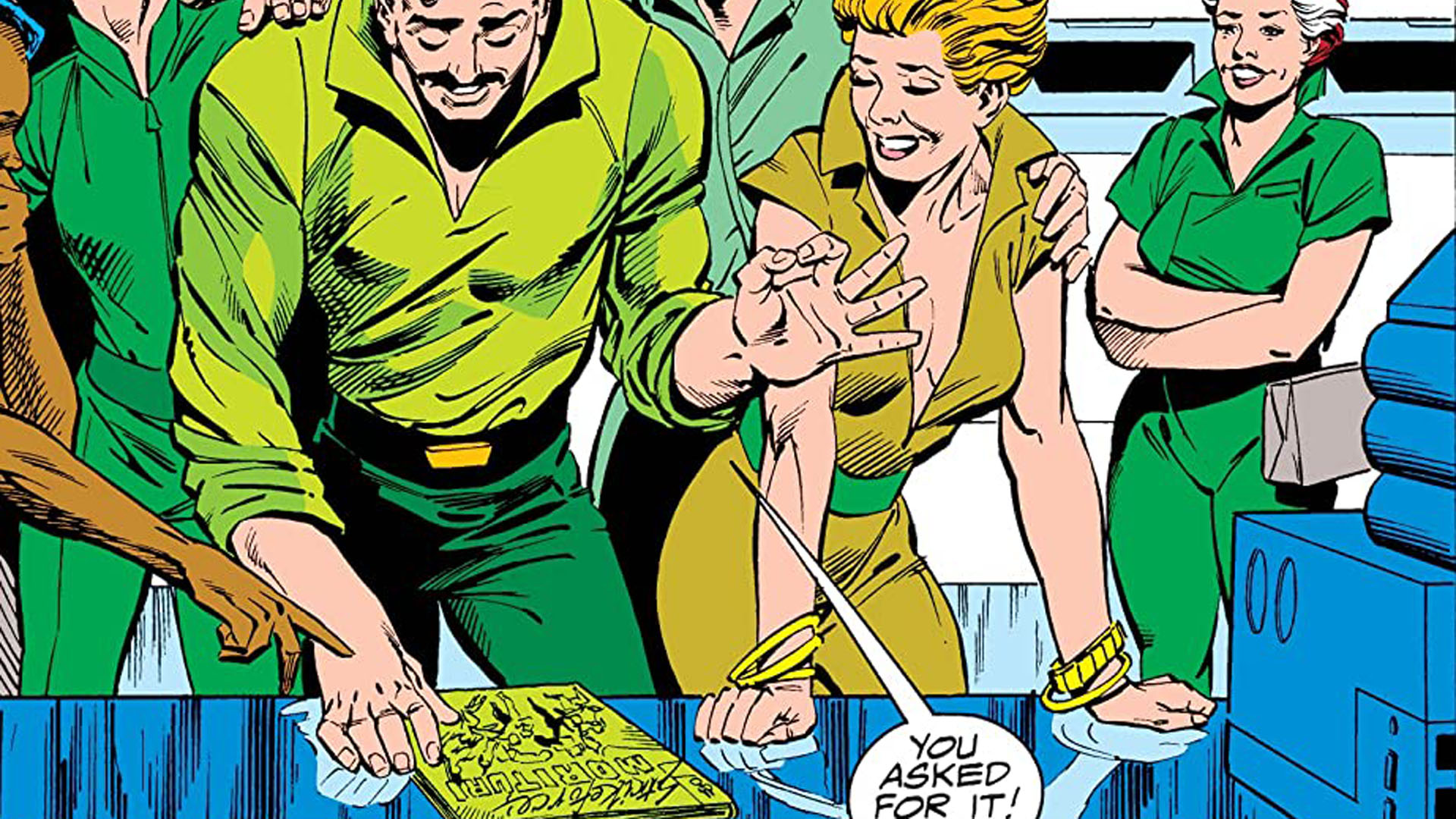
While many more Morituri followed the first generation, the story was never really about them. None of the subsequent teams changed or transformed as much as the originals. Their tale was one of what makes a hero and what breaks a hero, and is a superb comic book tragedy.
In July 1988, the last of the first generation of Morituri died, although Blackthorn's baby lived. The war still raged. The Morituri still fought back. And Doctor Tuolema, creator of the Morituri Process, sent a beacon into space, signaling for help from… whoever. Life had ended, but life began, and hope still endured.
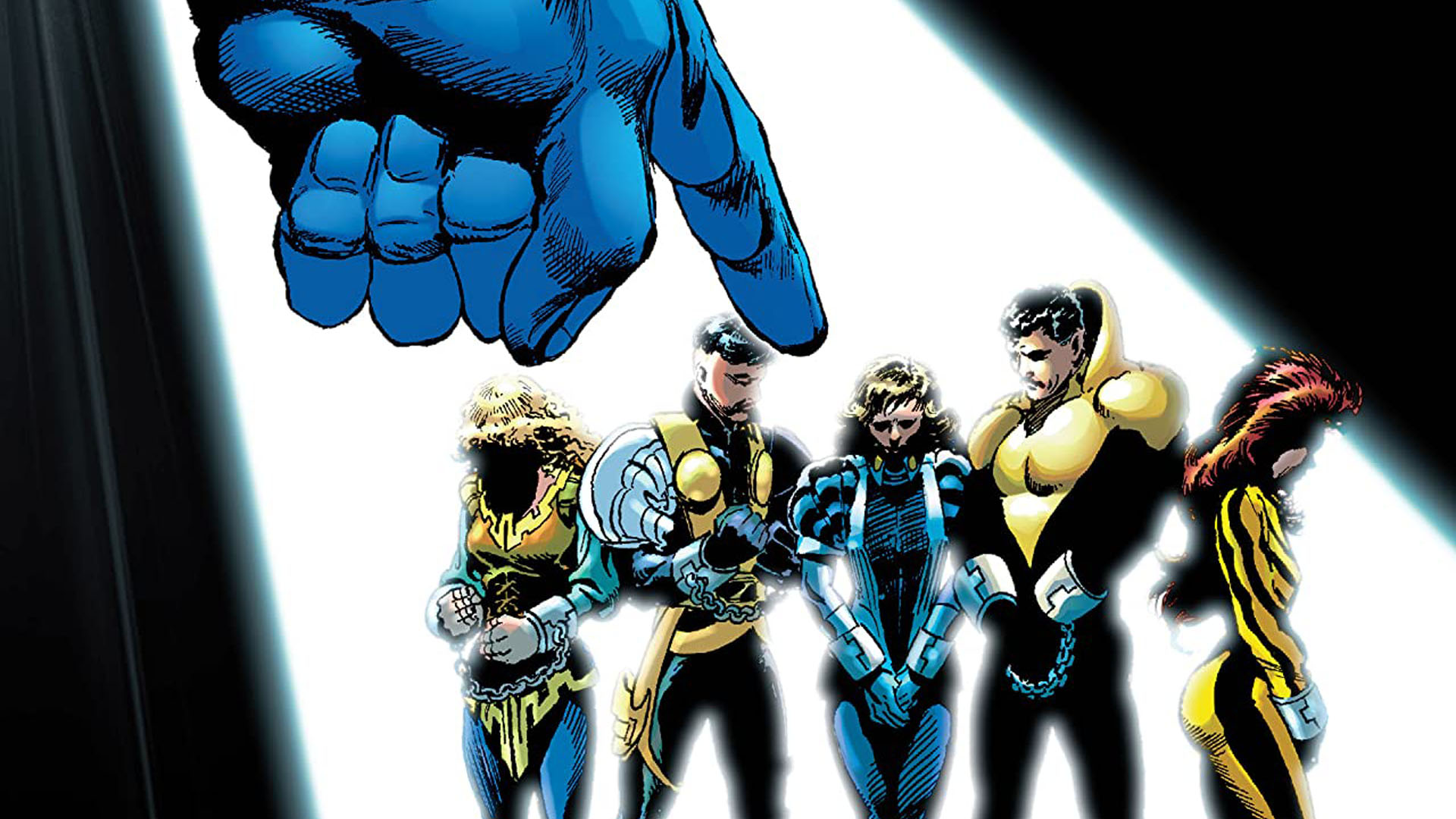
For 20 issues, Peter B. Gillis and Brent Anderson (under the editorial eye of Carl Potts) produced a slice of science fiction from a pie so broad that the series could only start in the middle.
Anderson (sometimes covered for by Wilce Portacio) threw the reader into a broken and distorted tomorrow with his art from the first page of the first issue. The remains of the space age city called New Roanoke got bombed out and ruined. The name of the city doesn't seem just clever, it's eerily appropriate. We are in the New New World. And it's not ours anymore. That's all we need to know, expertly illustrated on every page.
Similarly, we are given a vivid impression of the Horde. They are barbarian monsters, with swollen heads and littered with trophies. They wear ornaments of necklaces of ears and at the same time Mickey Mouse hats. They are bullies, they are sadists, and they are tourists. You can't help but feel either amused or disturbed at their mismatched appearance.
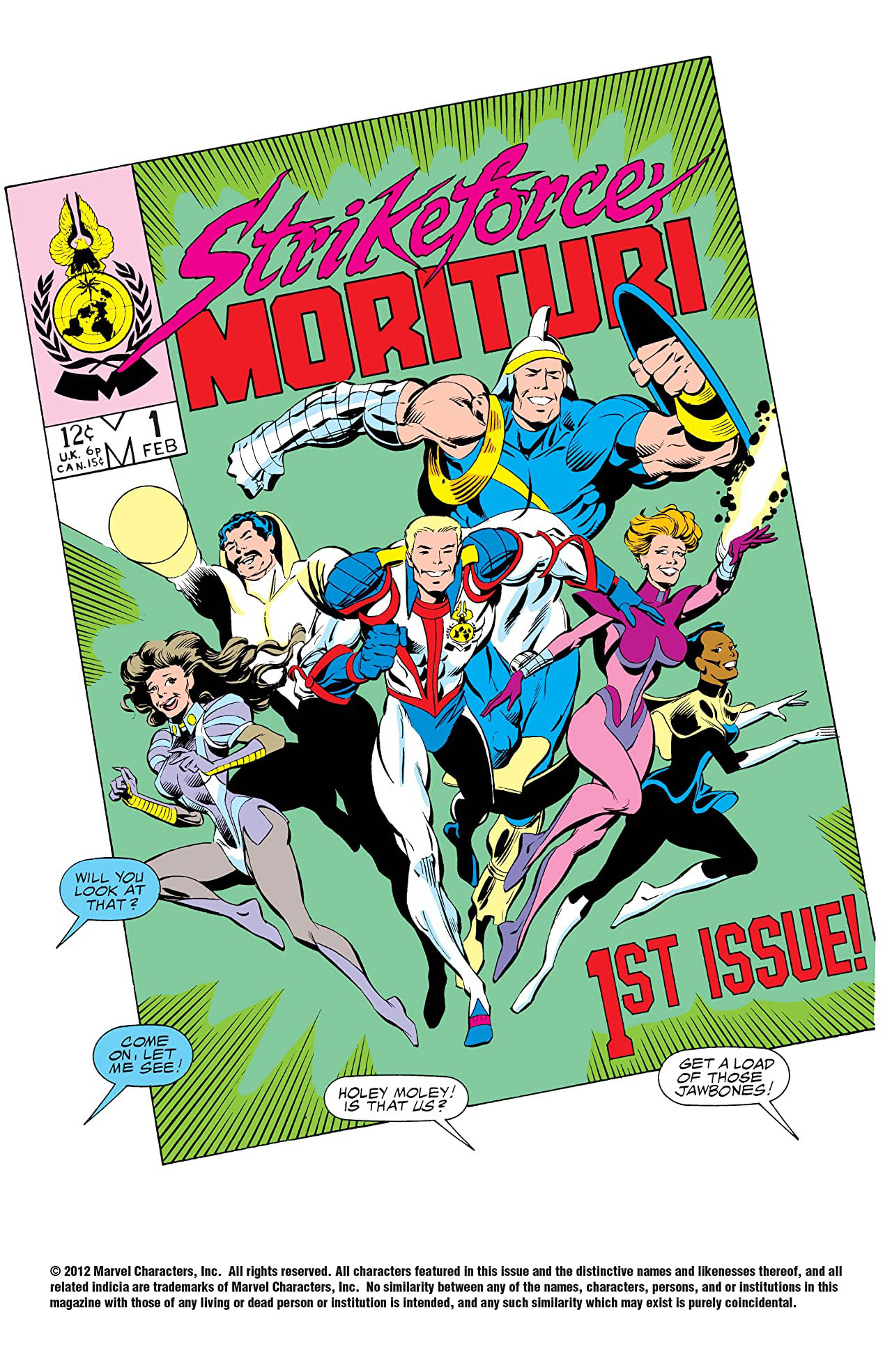
Despite the striking visuals though, Gillis provided scripts that were brimming with both action and tragedy. What made Gillis' issues so remarkable is the closure and bookend that he provided. The Strikeforce: Morituri #20 was the last for Gillis and Anderson, and it seems like poetic justice that their original hero, who had died 14 issues before, should have the last word.
The new commander of the new Morituri sits listening to a recording found from our original hero, Harold. It questions war, heroism, mortality, and sacrifice. It is a classic end to a classic run of a series that then went through its own Morituri Effect, and burned itself out. It is fitting then, that with a book that uses the memorable banner of 'We who are about to die…" should end perfectly with a story called simply "… Salute You!"
I expect I'll have a few adventures, but adventure is not a good reason to die, just as hate is not a good reason to die. Not even love is a good reason to die… not even life. What is a good reason to die? I really don't know, but I think I'll soon find out.
Harold Everson, AKA Vyking (Strikeforce:
Make sure you've read our recommended best Marvel stories of all time.
[Editor's note: This article was originally published in 2005.]


